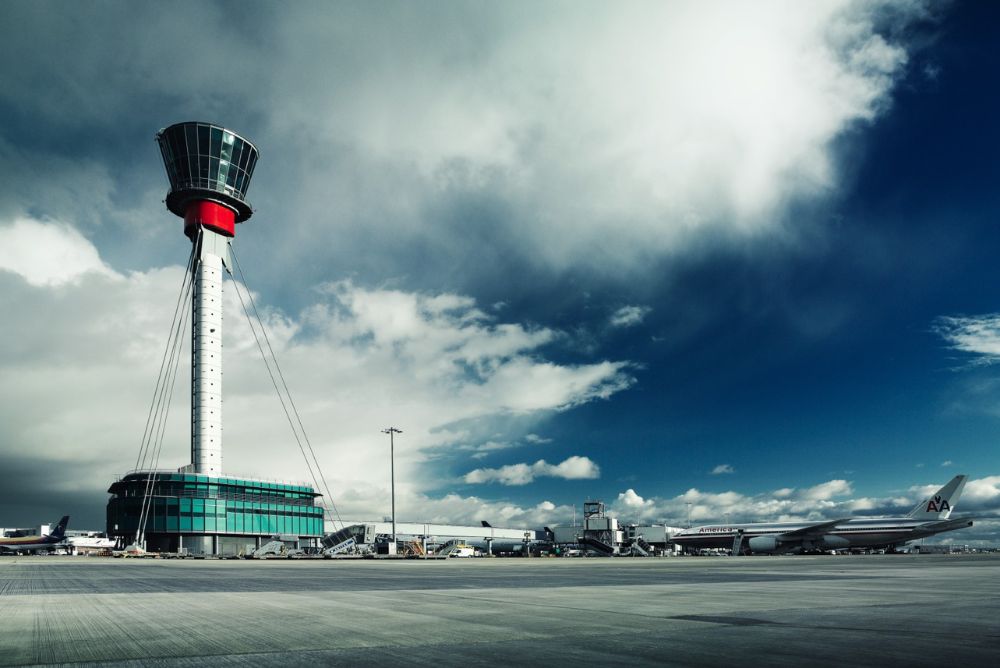Airports slam uncertainty in wake of Brexit deal defeat
By Luke Barras-hill |

The UK government’s Brexit deal loss offers no reassurance to future aviation connectivity.
ACI Europe has reiterated warnings of a ‘no-deal’ Brexit scenario to UK-EU air connectivity after Theresa May’s withdrawal agreement was resoundingly rejected in the House of Commons last night.
Speaking to TRBusiness, a Spokesperson from the voice of Europe’s airports said: “The fact that the defeat of Theresa May’s Brexit deal is being feted as a positive development by both sides of the Brexit divide in the UK is not reassuring. With little room for manoeuvre or time remaining, a no-deal Brexit looks increasingly likely.
“While existing air services between the UK and EU-27 will be able to continue, we are facing a potential freeze in the growth of air services between the two – something that will hit regional airports and their communities particularly hard.”
The result, confirmed after MPs rejected the deal by a margin of 230 votes, pours further uncertainty on the nature of the withdrawal process and its timing, with no deal, the prospect of a second referendum on the UK’s membership of the EU or a possible revocation of Article 50 among a clutch of possible scenarios.
DUTY FREE: ‘ALL CARDS ON THE TABLE’
Labour subsequently triggered a no-confidence vote, which is due to take place this evening (UK GMT).
Travel retail lobbyists have reacted to yesterday’s rejected vote as the prospect of a no-deal scenario edges closer.
In a joint statement, the UK Travel Retail Forum (UKTRF) and European Travel Retail Confederation (ETRC) confirm they ‘monitoring political developments closely and keeping in close contact with both key officials and political leaders in London, Brussels and across key capitals in Europe’.
The trade associations have moved to reassure the industry that they are planning ‘for all eventualities’, including a hard Brexit, and are ‘taking all necessary steps’ to ensure the industry’s interests are properly represented in London and Brussels.
“As the saying goes, a week is a long time in politics, and we could see all sorts of political developments in the coming days,” read the statement. “A new Brexit withdrawal plan needs to be presented by the British government to the House of Commons by Monday of next week, and we will be using the days ahead to present our key issues to key UK ministers.”
In November, the industry reacted favourably as the EU rubber-stamped a commitment for a revival of duty free sales to UK-bound EU travellers in the event of a hard Brexit as the UK assumes ‘third country’ status. However, the UK still needs to clarify its legislative position on the issue.
Should the UK government agree a withdrawal deal, a transition period until 31 December 2020 will apply [although there is the possibility this could be extended – Ed] during which time DF&TR trade between the EU and UK will be off the table owing to EU customs rules.

Olivier Jankovec, Director General, ACI Europe.
AIR CONNECTIVITY ‘STRANGLEHOLD’
ACI Europe Director General Olivier Jankovec stated yesterday prior to the delayed ‘meaningful vote’ that while the UK would be hardest hit in the eventuality of a no deal Brexit, many airports across the EU27 would also suffer.
In November, ACI Europe issued a response to an EU Commission regulation that confirmed basic air connectivity services between the UK and EU27 countries will be maintained for 12 months after 29 March.
The regulation, part of a series of legislative proposals aimed at mitigating the impact of a disorderly UK withdrawal from the EU, also made clear that UK airlines will not be permitted to increase routes or frequencies on currently operated routes during the period if a deal is not agreed.
It is reliably understood by TRBusiness that should growth in air services on the UK and EU sides freeze, it could result in a loss of approximately 93,000 new flights and impact 20m pax in the UK-EU27 market.
“With all these passengers departing or arriving in the UK but spread out across 27 other EU countries, UK airports and their communities would be disproportionately affected,” said Jankovec at the time.
TRAFFIC RESILIENT
Despite the situation, average passenger traffic across Europe grew by 6.4% in November year-on-year, with EU and non-EU volumes lifting by 6.7% and 5.3%, respectively.
The result underpins Europe’s continued air traffic resilience in the face of decided uncertainty. “These figures show that on the passenger side, demand for air transport keeps defying an increasingly challenging geopolitical and economic environment,” added Jankovec.
“But the party could be ending soon. We are facing a Eurozone close to stagnation with business confidence now at a four-year low, coupled with global growth losing momentum in a synchronised way and a slowdown in trade. While all of this is only taking its toll on freight traffic for now, there is no doubt that passenger demand levels are going to feel the effects at some point.”

Europe’s top five airports displayed moderate growth at +3.6% month-on-month, tempered by softened business at Istanbul-Atatürk (+1.2%; which is in the process of shifting Turkish Airlines’ operations to New Istanbul Airport) and Amsterdam Schiphol (+2.4%).
Paris Charles de Gaulle turned in the strongest performance (+6.4%), followed by Frankfurt (+4.7%) and London Heathrow (+3.2%).
Within the EU, airports in Austria, Greece, Malta and Luxembourg notched double-digit growth, while Germany, Italy, Spain, Ireland and Cyprus also outpaced European averages.
Conversely, airports in Sweden suffered a fall in pax (-1.6%) due partly to the national aviation tax, with Slovenia also hit (-3.6%).
While returning growth, at +5.3% non-EU airports notched their weakest monthly performance since January 2018.
As mentioned, this reflected weakened performances in *Turkey (-1%) and in Iceland (+5.8%).
Notwithstanding this, double-digit growth was recorded at airports in Russia, Ukraine, Georgia, Belarus and Montenegro.
This was particularly noticeable at Kiev (+33%), Pristina (+29.8%), Moscow-Sheremetevo (+19.5%), Tbilisi (+19.4%), Kharkiv (+18.7%), St Petersburg (+18.1%), Moscow-Vnukovo (+15.1%), Minsk (+14.2%) and Sochi (+12.4%).
Meanwhile, smaller and regional airports (less than five million pax) underperformed the European average with passenger traffic growth at +4.9%.
*Antalya Airport was the exception with growth of +25.9%
JEDCO launches multi-category tenders at KAIA T1
Jeddah Airports Company (JEDCO KSA) has issued a request for proposals for several...
Alcohol insights: Conversion up, spend down in Q4
Conversion of visitors in the alcohol category in duty free has risen to 54% in Q4 2023,...
Heinemann Asia Pacific makes breakthrough in New Zealand at AKL
Heinemann Asia Pacific is set to enter the New Zealand market with three new retail concepts at...

In the Magazine
TRBusiness Magazine is free to access. Read the latest issue now.

 Trbusiness. The travel retail Trbusiness. The magazine for global retail and duty free professionals.
Trbusiness. The travel retail Trbusiness. The magazine for global retail and duty free professionals.





















